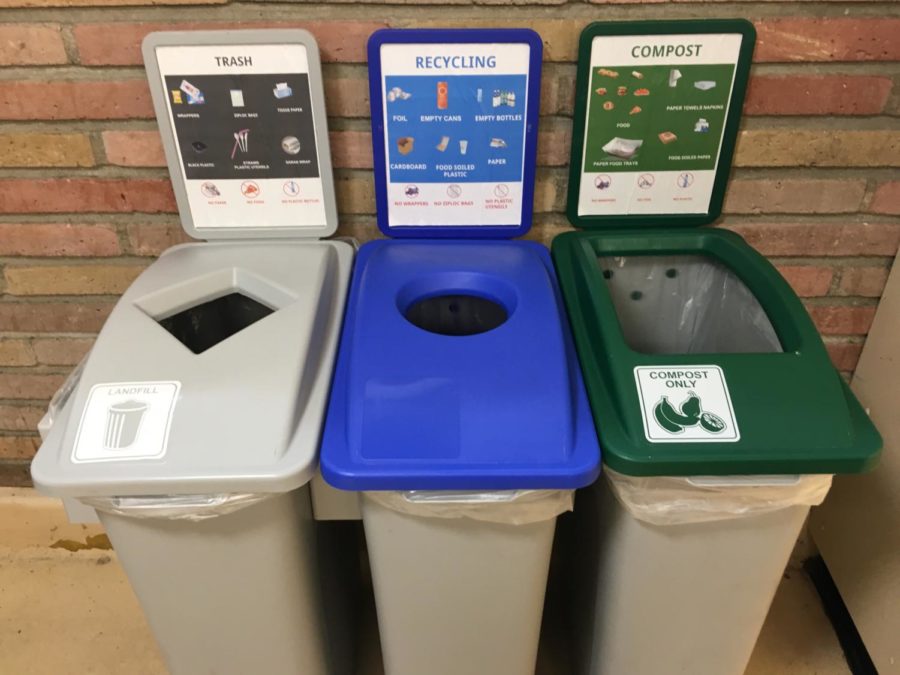Maker Projects
Compost Bin
Background
Composting is the process of recycling organic material (like leaves and food scraps) into usable fertilizer for plants. There are different types of compost. For this project, I focus on aerobic composting that utilizes bacteria that thrive in an oxygen-rich environment to break down organic waste. There are a lot of factors that are important to consider when creating compost. For more information about the process, what to do, and what not to do, visit Composting 101.
My partner and I started a pepper garden in 2021 and we wanted to use organic products for fertilizer and pesticides. I also wanted to minimize the amount of waste we produced. My dad had been experimenting with composting for years. I didn't want to buy a pre-fab composter (a small, nice tumbler cost around $100) so I thought it would be fun to try and make one.
Design Process
I had limited space at my small apartment with an even smaller yard. I wanted to be able to make something quick and cheap that could be hidden in the tiny space between the hedge and the window (I wasn't sure if my landlord would let us have a composter, which can sometimes smell and attract animals).
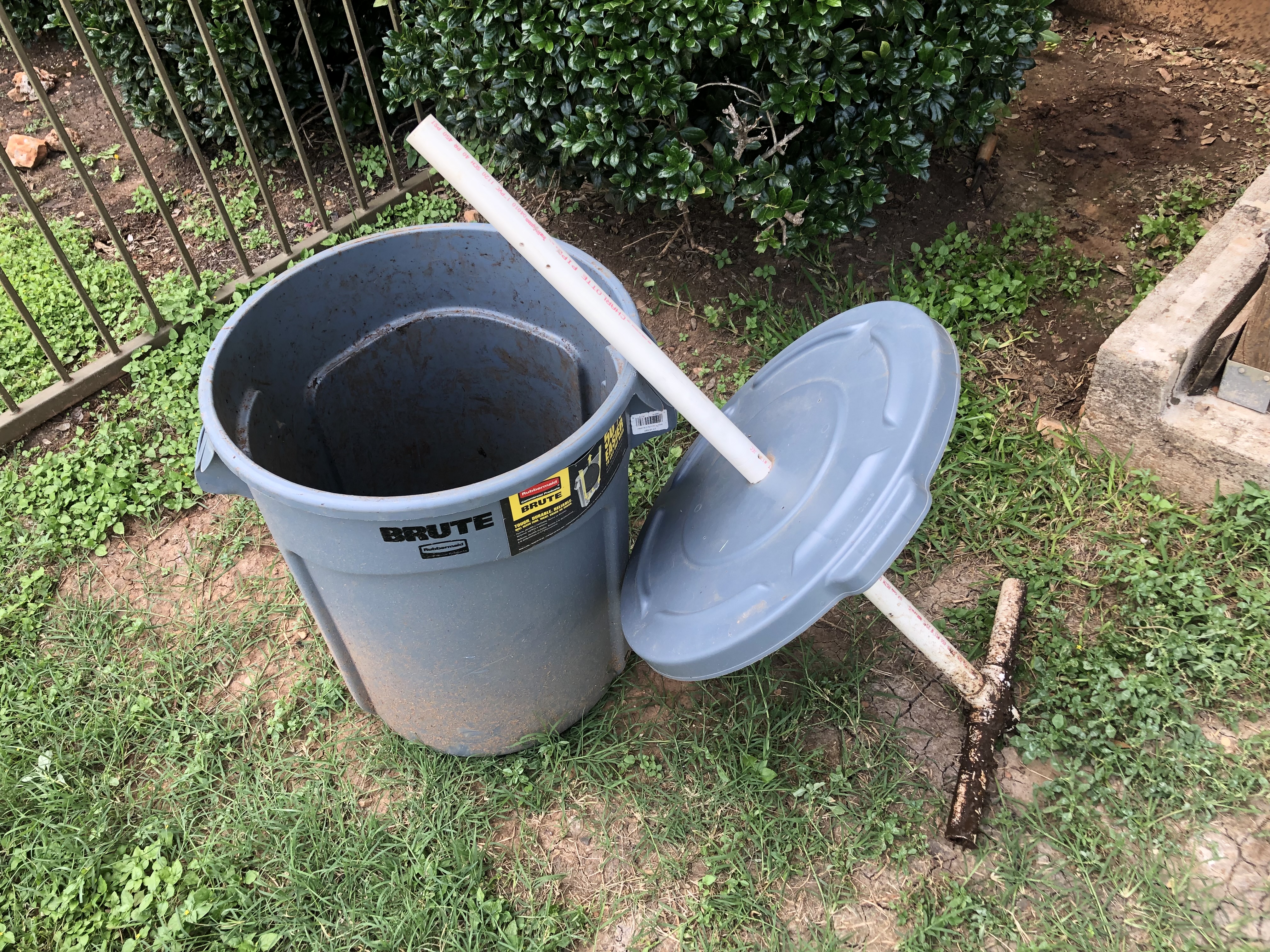
|
Materials and Tools: |
|---|---|
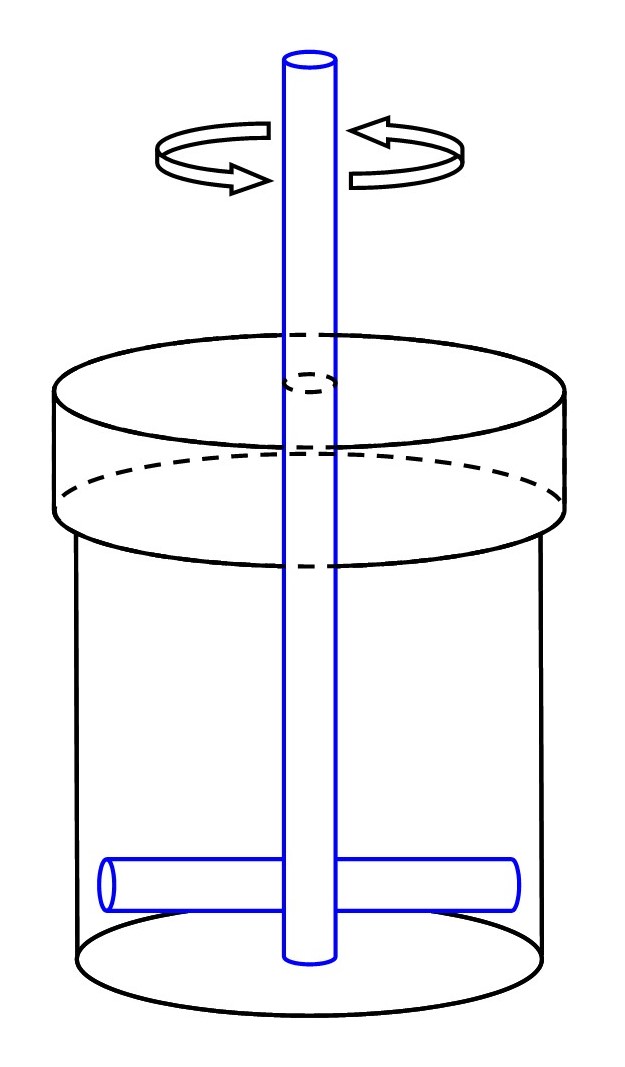
|
My dad and I worked out a simple design that utilizes a trash bin and PVC. The compost needs optimal air flow and water for the best results (i.e. the organic material needs to be turned frequently). To accomplish this, I made a T-shaped PVC "turner" using PVC pipe and PVC cross fitting. These should be cut to length depending on the size of the trash bin - the vertical PVC segment should be about 1.5-2 feet longer than the height of the trash bin and the bottom PVC segments should not exceed the width of the base of the trash bin (see diagram). I drilled a large hole, using a hole saw bit, through the lid of the trash bin equivalent to the outside diameter of the PVC pipe so that it fit tight with minimal space. Smaller holes were drilled along the vertical segment to provide airflow. It was better to start with a few holes and add more later as necessary depending on the moisture level of the compost. |
Results
Every week I would fill the compost with kitchen scraps, yard waste, and other material, close the lid, and turn the compost with the PVC "turner". Over time, the consistancy of the compost was clay-like and frequently had trouble with insects. Insects aren't necessarily bad for the compost, they can help decompose the waste, but they seemed to overpopulate the bin. It also seemed like there was not enough air flow, the compost was too wet and was difficult to turn. I drilled more holes on the side and at the base of the bin, which slightly improved the air circulation. Unfortunately, the compost did not meet expectations after 8 months and I decided to restart with an improved compost bin.
Revisions
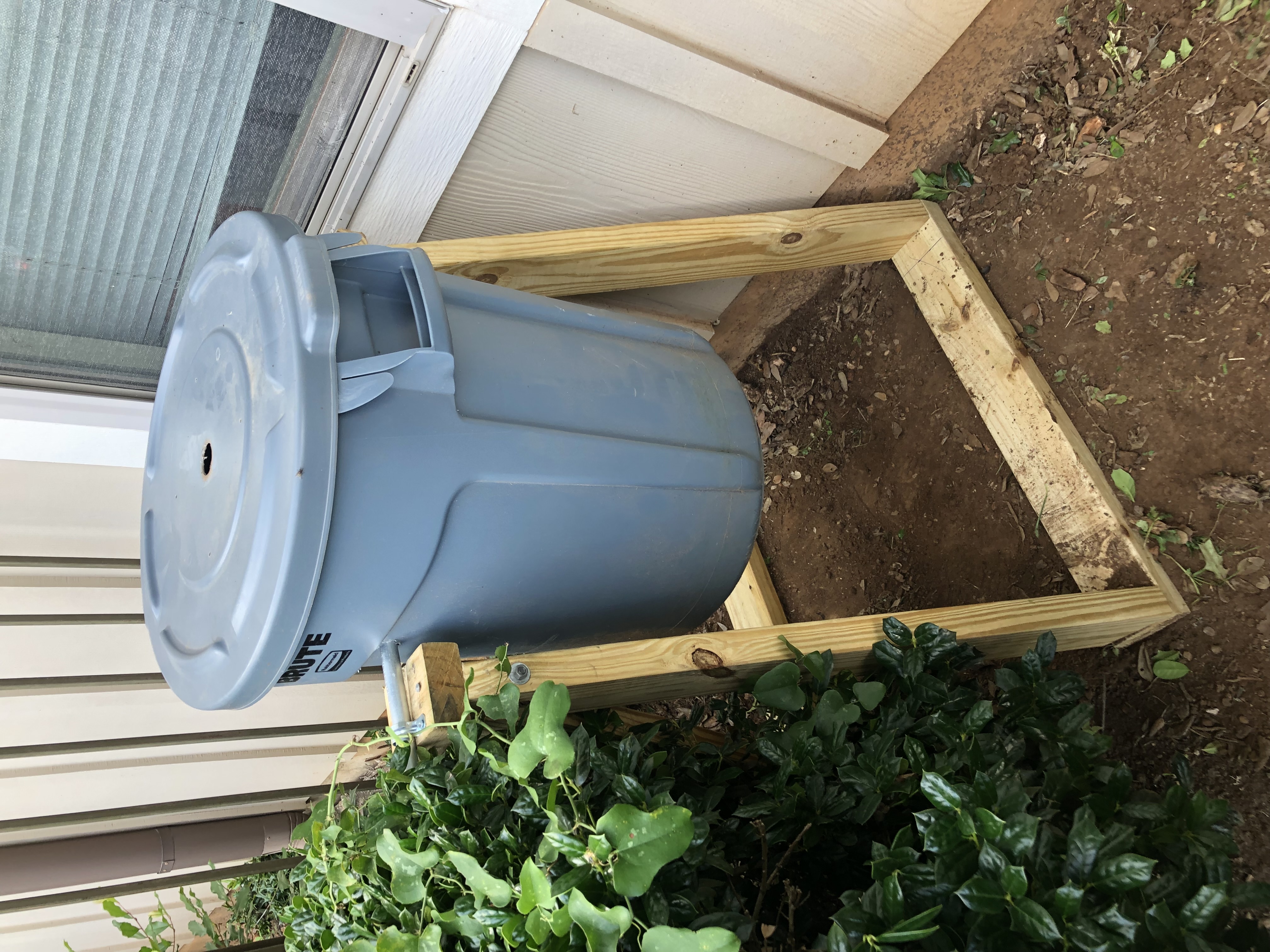
|
Materials and Tools: |
|---|---|
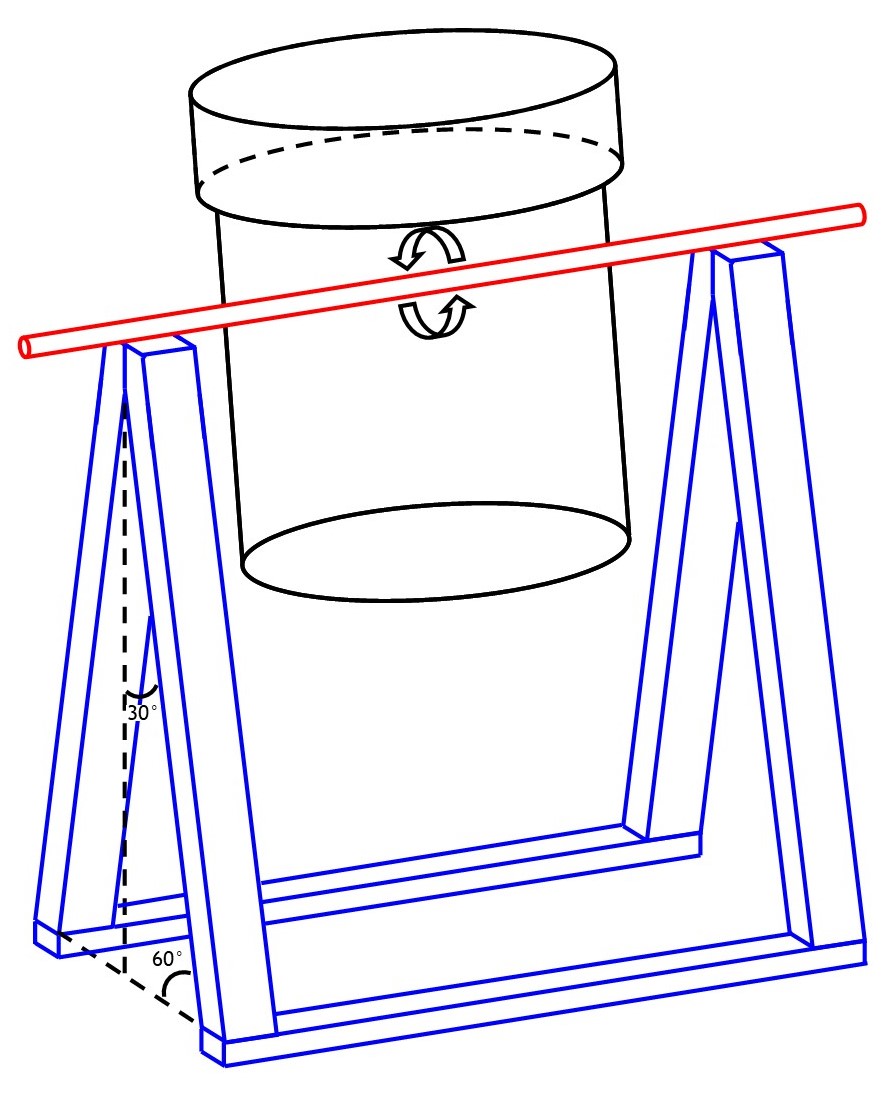
|
I though that the problem was the ability to turn the compost evenly, which was difficult with the PVC turner when there was a lot of material in the bin. I decided to turn the compost bin into a tumbler, refitting the trash bin to turn on an axis. To accomplish this, I made an A or triangle wooden frame (see diagram). To make a stable triangle, I needed to make angle cuts at the top and bottom of the wood boards. These two angles (dotted lines in diagram) should sum to 90°. I chose 30° for the top cut and 60° for the bottom cut, giving the frame a narrow base that could fit in the same small space as before. I also added wood pieces to the top of the frame, where the wood met at a point, for added stability and a place for the rod to rest. The rod was run through the trash bin after making a 1/2" hole at equal distances from the bottom on opposite ends of the bin. The brackets were used to hold the rod in place. The rod could still move in one direction so that I could remove the bin if needed. |
Results
I once again filled the compost with kitchen scraps, yard waste, and other material, closed the lid, and turned the tumbler. The consistancy of the compost was no longer clay-like and I had less problems with insects. I drilled a few more holes at the base of the bin to help excess water drain. Having the bin off the ground helped keep the compost at the right moisture level and made it easier to turn. I did need to secure the lid with bungee cords to keep the waste from falling out when it was turned. This was the quickest and easiest fix for that problem, and I plan to revise that issue in my next revision. Overall, I could tell from the look, texture, and smell that the quality of the compost had improved and would be usable for our garden.
Reflection
I enjoyed working on this project and trying to minimize the waste I produce. Although I haven't used the compost in our pepper garden
School gardens have become more popular ways to promote healthy living and applied science with students. Many schools also have a composting program. Unfortunately, a lot of students are not aware of what should go in the trash, the recycle bin, or a compost heap. However, a lot of students are also very motivated to learn and improve the environment around them. I envision that building a composting device would be a great project that would get students excited to learn about the science involved and create an eco-friendly environment at their school.
